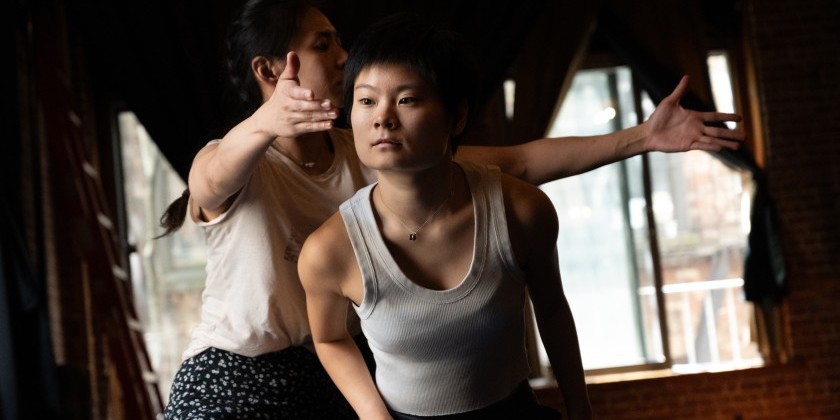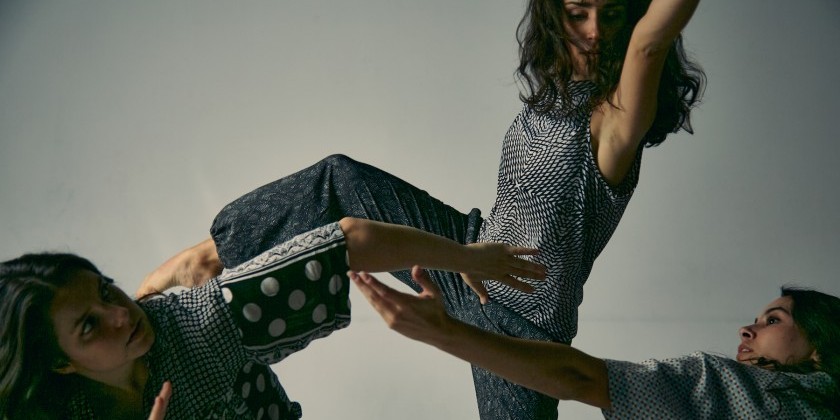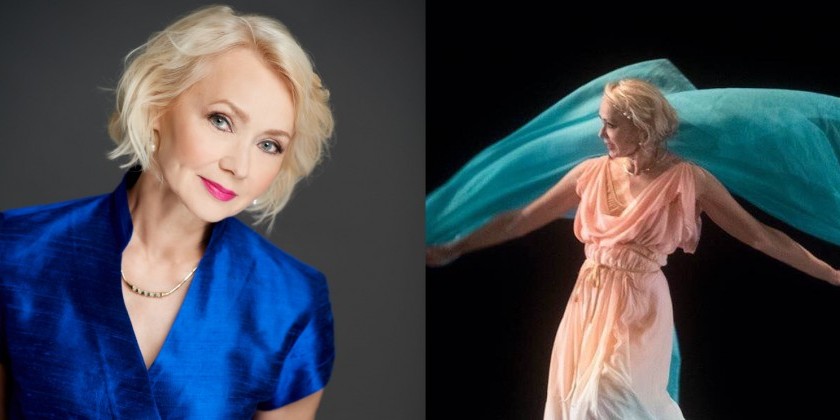MOVING PEOPLE: Chelsea Ainsworth on Producing Shows During a Pandemic, Finding Connection, and How "Singin' in the Rain" Always Puts a Smile on Her Face


Chelsea Ainsworth
Biography
CHELSEA AINSWORTH is a graduate of the Dance Department of The Juilliard School where she received the Joseph Polisi award for commitment to outreach and building community around the arts. After graduating she worked with various choreographers including Johannes Wieland, Lorena Egan, Flexicure, Amber Sloan, Bryn Cohn + Artists, ZviDance and the Bang Group. She was on the modern dance faculty at Cap21 musical theater school and Chen Dance Center for four years. She is the Co-Founder and Executive Director of Arts On Site, a non-profit organization dedicated to supporting artists of all disciplines and building community around the arts. She also built and owns a residency and retreat center in the Shawangunk Mountains, where she curates residencies for artists. Currently she is dancing and choreographing through Dual Rivet, a women-led dance company based in NYC.
Photos by Art Davison
On right: dancing with Effy Grey
How did you know that you had to be involved in dance? Was there a specific moment, dance work, or person who motivated and inspired you?
I always had to be moving as a kid—soccer, swimming, music lessons and dance. When I was 12 years old, I got into North Carolina School of the Arts. At such a young age ,I had to make the difficult decision of leaving home, my dance studio, and all of my friends to go to a boarding school for dance. At that moment, I chose dance, forever. Judy Garland was one of my first inspirations; I used her music for my first competition solo.
What is/are your favorite dance move(s)?
I am fascinated by complex, contemporary partnering. I love figuring out new pathways and patterns to use while partnering.
The most expressive part of the body is _____________.
normally, I would say your face. I can always tell when someone is holding tension or feeling something in their body through the way they are holding their face. Lately with COVID and dancing with facemasks, I’ve come to realize that hands are extremely expressive as well and can communicate just as much.
When did you feel compelled to explore curation? How do you balance your aesthetic preoccupations with the audiences’? How often do funding structures influence the curatorial process?
I’ve always been surrounded by artists (musicians/dancers/actors), and I’ve always admired the artists around me. I curate to showcase artists I admire, so that everyone can experience how phenomenal my friends and fellow artists are!
I was 16 when I curated my first concert to raise awareness and money for HIV/AIDS in North Carolina. This was the first version of what Arts On Site now calls the “Performance Party,” using our art for a cause while showcasing different artforms together for all to enjoy.
What do you consider your greatest achievement(s) thus far?
Building a residency center in upstate NY while simultaneously operating a performing arts studio in NYC for the past four years.
What is your motto?
There is always a creative solution.
My greatest influence(s) is/are _____________.
my family, Crystal Pite, Christy Curtis, David Parker, Zvi Gotheiner, and all of the artists friends I have that are pushing themselves constantly
If you could change one thing about your career, what would it be?
Careers don’t really work that way. I wouldn’t change a thing.
The arts have always been tough, and now we have a pandemic that makes live shows — the point of most performing artists’ life — extraordinarily difficult. Do you see a clear path(s) forward for companies? How about for curators?
I think live shows and in-person rehearsals will take more organizing and way more attention to details. Ticket sales in advance, liability waivers, temperature checks, distanced seating and less capacity . . . but they are coming back in a safe way. We have to understand that live shows may never feel like they did before, and that's okay. There are new ideas as well as new technology (such as live streaming) that can enhance what we were doing before and even share with a broader audience. Moving forward will be a hybrid of both in-person and virtual.
I question _________.
virtual connection. I am learning the importance of connection and am still trying to figure out what it means to connect to an audience on the virtual platforms that are offered right now
I would like to learn to ____________.
relax — it just isn’t possible for me
If I could teach the world one thing, it would be ___________.
to connect with one another, truly connect. Be curious about the people and lives around you, that's how we learn
Tell us about your recent experience curating and arranging shows during the pandemic. What did you have to take into consideration to provide a safe and positive experience for both the artists and the audiences?
I spent a lot of the pandemic going through a mental and physical battle with my artform. There were a lot of questions that came up as to why dance, what jobs was I saying yes to just to dance, and does dance serve me in the way I need right now?
Artists are taught to connect to audiences, yet for the past 6 months, our work has been cut off. We’ve had to alter our way of being, and we still aren’t being considered “essential.” Luckily dance is what pulled me through — the constant practice, creating a film with my dance partner, and realizing that if I want dance to come back, I need to bring it back!
Finally, being back with artists in real time, watching them perform, and sharing their beating hearts with us all to hear has been such a breath of fresh air after these six virtual months.
We’ve done a lot of pivoting at Arts On Site. Considering how can we keep our audiences as safe as possible? Arts On Site provides a COVID Questionnaire, temperature checks at the front door, sanitizing stations, sanitizing seats and high touch areas between shows, masks at all times, and distanced seating to create a “low risk” performance. Secondly, who is willing to perform after a pandemic emotionally, physically and mentally? A lot of artists have moved out of NYC, considered new career paths, or are terrified (rightly so) to rehearse with other people in person. We have had to find new ways to offer rehearsal space in 1-week residencies, ask artists to get COVID tests, as well as create new policies around people entering our Arts On Site bubble. All in all we are fighting because the performing arts are what will pull us all mentally, physically and emotionally through this pandemic.
If you were trapped on a deserted island and could choose one performance to watch for the rest of your life, what would it be? Why?
Hard to choose. I’d probably watch Singing in the Rain: amazing dancing, joyful — always puts a smile on my face. I’d need that alone on an island.
One of the jobs/projects I most enjoyed was_________ because _________.
dancing for Johannes Weiland because I was living in Germany; I was super young, explored and learned a lot
One of my favorite artists (dead or alive) dance or otherwise is ________.
What are the hard questions that institutional artistic directors/curators in the 21st century must ask themselves? Do these questions have answers?
I’m not sure what the questions are at the moment. I believe the biggest hurdle will be the financial implications of the pandemic. Artists are creative and will always find ways to survive. It’s a question of will the institutions be able to financially pull through?
Is presenting live performance such as you did with Arts On Site: Arts on the Roof a sustainable way forward? What advice would you give someone who is considering curating a performance during a pandemic?
I am not sure what is sustainable for the arts at the moment. I believe curating live performance is definitely a way forward and can be sustainable. I think curators need to be flexible and ask what people are comfortable with, both audience and performers . . . constantly ask about people's boundaries and don’t take artists comfort levels for granted. Artists are used to doing anything for their art forms; we cannot do that anymore. We have new bumps in the road, and curators need to be aware of that and try to help as much as possible.
What can we expect next from you and Arts On Site in the future?
-
LIVE performances: We have an initiative called “Arts Alive” which are “low risk” performances
-
Virtual Performances: We curate virtual performance party events
-
Residencies upstate: we have artists upstate one week at a time creating work from April-November in exchange for work trade
I am looking forward to _________ in 2021.
teaching and partnering in-person and hugging my friends









